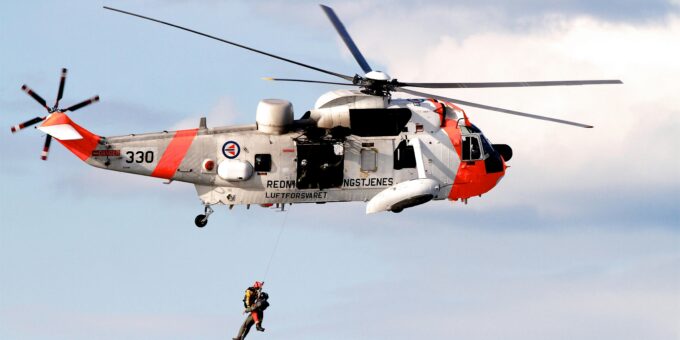
The aviation industry has always been at the forefront of adopting cutting-edge technology. From the invention of autopilot systems in the early 20th century to the development of advanced glass cockpits, technology has consistently supported pilots in performing their complex roles. In recent years, Artificial Intelligence (AI) has emerged as the next great leap forward. Unlike traditional systems, AI is not limited to pre-programmed responses; it learns, interprets, and adapts in real time.
In the past, autopilot could keep an aircraft on a set course or altitude, but it could not respond to dynamic situations without pilot input. AI changes that paradigm. By processing vast amounts of data, it helps pilots anticipate turbulence, predict mechanical failures, and even recommend emergency maneuvers. This shift from reactive to predictive capability is a game-changer for safety and efficiency.
Furthermore, modern aviation faces unique challenges: growing air traffic, increasingly unpredictable weather, and the constant demand for greater fuel efficiency. Human pilots, no matter how skilled, have limits when it comes to real-time data processing. AI bridges that gap by acting as a co-pilot that never tires, never loses focus, and never misses critical data points. The result is a new era where human intuition and machine intelligence work side by side to keep the skies safer than ever.
How AI Complements Human Pilots
Human pilots excel in judgment, intuition, and adaptability. However, they are susceptible to fatigue, stress, and information overload, especially on long-haul or high-stress flights. AI complements their strengths by taking over repetitive and data-heavy tasks, reducing cognitive strain, and providing real-time insights.
For example, AI can act as a vigilant assistant by continuously monitoring flight parameters, such as engine performance, altitude variations, and external threats like bird strikes or weather changes. Instead of the pilot manually checking dozens of dials and screens, AI filters the noise and presents only the most critical alerts. This allows pilots to stay focused on decision-making, communication, and navigation.
Another area where AI shines is in situational awareness. By synthesizing radar inputs, satellite images, and air traffic updates, AI provides a constantly updated “big picture” of the airspace. Pilots no longer need to rely solely on manual updates from air traffic controllers or onboard instruments. The AI ensures they always know what’s happening around them, which reduces risks of miscommunication and human error.
In essence, AI doesn’t aim to replace the pilot but to serve as an extra set of skilled hands and eyes. It ensures pilots are not just managing a machine but making informed decisions with precision and confidence.
AI in Flight Planning
Flight planning has traditionally been one of the most time-consuming tasks for pilots and airline dispatchers. It involves calculating the optimal route, fuel requirements, weather conditions, and potential traffic restrictions. Errors or misjudgments in this process can lead to costly delays or even safety risks. AI revolutionizes this stage by making planning more efficient and accurate.
Using predictive algorithms, AI analyzes historical flight data, real-time weather updates, and air traffic patterns to design the most efficient routes. It considers dozens of variables simultaneously—something impossible for a human to do in the same timeframe. For instance, if a storm system is developing along the intended flight path, the AI can automatically suggest alternative routes that balance safety, fuel efficiency, and passenger comfort.
Fuel efficiency is another critical area where AI contributes. Airlines spend billions annually on fuel, and even small improvements in consumption can result in massive cost savings. By analyzing aerodynamic performance and weather conditions, AI systems provide pilots with suggestions for optimal cruising altitudes, speeds, and descent strategies, all aimed at reducing unnecessary fuel burn.
Moreover, AI-driven flight planning integrates seamlessly with airport operations. It can predict gate availability, optimize takeoff slots, and minimize delays caused by congestion. This holistic approach not only helps pilots but also streamlines airline operations, benefiting passengers and operators alike.
AI-Powered Cockpit Assistance
Cockpit technology has evolved significantly over the decades, but today’s AI-driven systems are taking it to the next level. AI-powered cockpit assistants function like “digital copilots,” offering real-time support and reducing pilot workload.
One prominent feature is voice-enabled copilots. These AI systems can respond to verbal commands, retrieve data, and even perform tasks such as adjusting autopilot settings, managing checklists, or communicating with air traffic control. This allows pilots to keep their hands on the controls and their eyes on the skies, minimizing distractions.
AI also plays a crucial role in real-time alerting systems. Unlike traditional alarms that simply warn of an issue, AI-based alerts provide context. For example, instead of a generic warning about low fuel, the system might say, “Fuel levels are below optimal; suggest diversion to Airport X within 30 nautical miles.” This not only identifies the problem but also proposes solutions.
Additionally, adaptive dashboards adjust their display based on the flight phase and pilot needs. During takeoff, the system emphasizes speed and runway data, while during cruising, it highlights fuel efficiency and weather updates. Such adaptability reduces the cognitive burden of scanning through unnecessary information.
In effect, AI-powered cockpit assistance transforms the flight deck from a passive information hub into an active decision-making partner, enabling pilots to maintain higher levels of safety and performance.